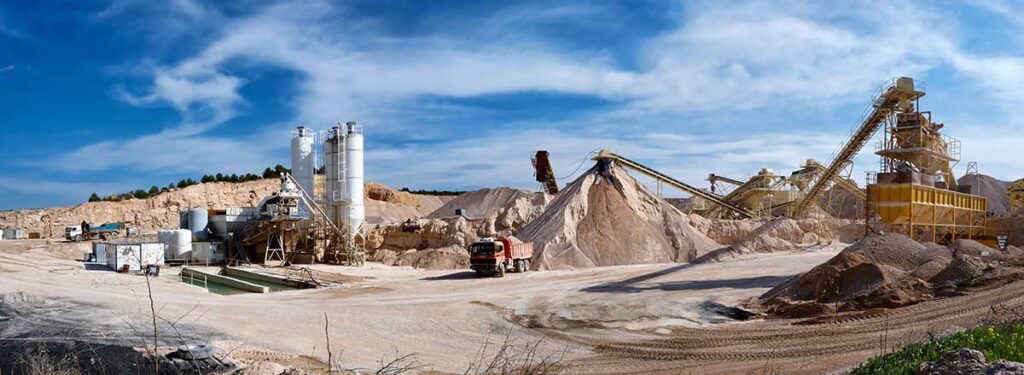Supply chain difficulties have been a hot topic among suppliers, customers, and the talking heads on TV. Procuring products is a reverberating strategic issue for any business, the Green Industry included. What can we expect for the rest of 2022?
Weak Links In The Chain
The global economy, labor conditions, war, natural disasters, pandemics, and political response all impact business cycles and marketplace stability. In the long run, these factors tend to be temporary bumps in the road. Fortunately, the road is survivable if you keep your eye on the business basics and take advantage of the opportunities that typically accompany such events.

1. Raw Materials Shortage
Uncertainty and government activity slowed the flow of materials and manufacturing during COVID’s peak season, though the demand for goods remained artificially elevated. The supply chain became overwhelmed by panic-induced manufacturing cutbacks and a large shift in the labor force.
COVID-related manufacturing shutdowns and elevated consumer demand within the semiconductor industry have led to an ongoing global shortage. Demand for wire, tubing, plastic resin, and other typical Green Industry materials remain at record highs, hiking up the cost of products. Continued inflation during the first half of the year is indicative of these pricing patterns as well as other contributing forces. For example, copper costs have increased by 45%, impacting the price of irrigation and lighting wire. Some product prices are expected to stay inflated for a longer duration. Due to summer heat and weather conditions, seed crop losses are expected to reach a 50% increase through the end of the year.
2. Labor Deficiency
Unfortunately, lack of labor is still a hampering constraint. More than 30% of manufacturers report that it’s more difficult to find talent now than before the COVID-19 pandemic, with almost 80% expecting difficulty attracting talent going forward. Significant increases in service industry wages are repelling hourly associates from manufacturing jobs.
Scarcity of labor is a societal transition that will take years to work out – but it will work out. Hurdles like labor shortage should encourage companies to tweak their business models. Right now, business owners are trying to attract workers to them instead of someone else, entailing hiked labor costs.

3. Freight Response To The Global Economy
Freight shortages and higher pricing increase the cost of many products, including freight-intensive products like hardscapes, fertilizer, and plant material. Yahoo! News reports that freight costs would likely remain high into the year, providing no relief to those feeling the punch at the pump and the grocery store.
Container shipping costs from Asia have increased as much as 10X since the start of 2021.
Diesel fuel prices are up 40% in the United States.
Driver shortages and increased demand have resulted in more than 150 loads waiting to be shipped for every available truck.
Freight shipments in the United States are up more than 10%, with costs reaching a 40% increase.
4. Geo-Political Issues
International turmoil can also reframe the supply chain, as with the war in Ukraine. Allied sanctions against Russia, the world’s 11th largest economy, have reverberated the global economic landscape. Oil heavily steers the supply chain, which is why a U.S. recession usually follows an increase in oil prices as we are extremely energy-dependent. With oil so entrenched in the economy, high gas prices generally trickle down into other branches of the economy. The cost of shipping is through the roof because bunker fuel is exercised so often. Oil and gas are essential components for fertilizers that are both also undergoing shortages since Russia and Ukraine are major exporters of both.
According to CNBC, Russia is the world’s largest producer of palladium, contributing nearly a third of global demand. Palladium is a metal used to manufacture semiconductor chips, which are found in a range of consumer electronic products like smartphones, computers, TVs, and digital cameras.

Surviving The Chain Pains
Two factors are helping the supply chain recover: consumer demand is slowing, and raw material suppliers and manufacturers have figured out how to satisfy demand. Indications are that by year’s end, most supply and pricing issues will be resolved. How does a Green Industry contractor respond?
Refrain from panic buying. Though it will take longer to get it, products will be available. Expand your buying window a couple of extra weeks.
Avoid “timing” the market. Inflation is real, but it is not systemic. In other words, recent legislation, geopolitical issues, and labor tightness have caused price hikes. Many will eventually decline and others will collapse under competition in a slower market. Buy what you need to sustain your operations for the subsequent one to three months. Do not take the risk of buying ahead much more than that as deflation and shrinkage could eat up your perceived profit.
Communicate with your suppliers. Ask distribution and manufacturing representatives what they hear about the products you may require and consider the information, researching other possibilities in the process. The supplier’s information may not be accurate, or worse, some suppliers may be using fear as a tool to encourage larger than normal ordering. Understanding the street vibe helps you better digest what the experts report. Remember: Awareness is the key to survivability and prosperity.
We will continue to keep you informed as new information becomes available. Thank you for entrusting Wolf Creek Distribution to support your success during these challenging times. With knowledge and cooperation, we can overcome the chain games together.












